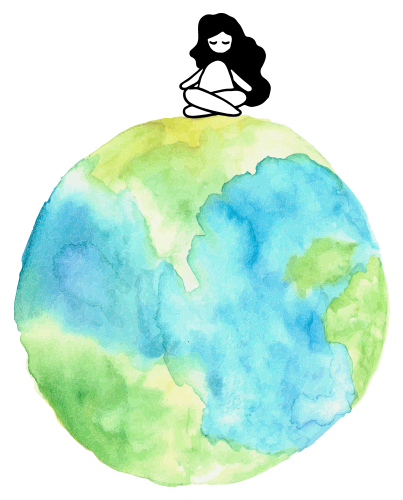19 Apr Food is Love
Daadi was cooking again. After the last school bell rang and I began to walk home, the air became infused with garlic, ginger, cardamom, cloves, red chili, and the new immigrant stink which penetrated everything within a one block radius of our house. Head hanging down, desperately hoping that no one – especially a friend – would ask, “Where’s that smell coming from?” I quickly walked towards the epicenter of the odor.
“Salaam,” I called out to no one in particular and yet everyone upon entering the home.
“Samita, ya low [take this],” Daadi presented me with a spoonful of whatever she was stirring.
“Kai hai [what is it]?” I asked. Questioning elders was taboo but having witnessed Daadi serve scrambled brains, bone marrow stew, sautéed kidneys, as well as other a la Indiana Jones: Temple of Doom dishes, I inquired.
“Veggie bhurta,” she answered. Veggie was all I needed to know.
The oil shimmered in the pot letting Daadi know it was time to add the onions. Onions, a harsh vegetable bringing most to tears when in raw form magically transforms into a sweet, aromatic companion to most Indian food. Depending on the dish being made, fresh garlic and ginger are usually added after the onions become translucent and light brown. Spices follow up the trifecta of aromatics scenting the air with far away lands and ancestors long gone.
“Roti kai hai [Where is the roti]?” I asked, looking around for the “bread” that usually accompanied the main dish.
Consisting of wheat flour, a sprinkle of salt, and just enough water to give it elasticity, the dough need not sit for long before cooking. Our servants used to make them fresh at every meal even though all the women knew how to make it. Having immigrated, leaving our extravagant lifestyle behind for freedoms which no longer existed in Pakistan, the women in our family made roti every day – from scratch.
Daadi made me a fresh roti, set it aside, and told me to wait just a bit so the tortilla shaped temptress didn’t burn me. After waiting as long as an eight year old is capable of doing, I tore off a piece of roti, took a heap of the veggie bhurta, and smiled with delight.
“Samita ko acha laga [Samita likes it],” Umme said.
My goofy smile and silence from eating said it all – I loved it!
“…so today I ventured into my pantry looking for a glimpse of my past…”
Daadi has long been gone, Umme rarely makes roti anymore, so today I ventured into my pantry looking for a glimpse of my past: wheat flour and salt. I placed the bowl on the counter as a hummingbird greeted me outside the kitchen window.
There is no measuring in Desi cooking; at least not in our family. I poured the flour into the bowl, scattered the salt, took the kettle of lukewarm water leftover from earlier in the day and poured just a little in. As my right hand kneaded the dough together, my left hand poured a tiny bit more water at a time, and my mind wandered off: to time gone by, ancestors across the landscape, stories shared, love of family, and the connection of food. I kneaded my heritage into the dough and honored my elders by recalling them with fondness.
Before my family sat down for supper, I took a portion of the dough, placed it in my hand and rolled it into a tighter bundle. With the slightest amount of flour on the board and using a wooden rolling pin, I carefully pressed the dough into a larger sphere, until it was as thin as air and slightly transparent. Not having a taava [pan for making rotis], my cast iron pan would do. The roti browned just a bit on each side until it firmed up. I moved it to an open flame, shifting it all around, dispersing the heat evenly. If done well the roti will fill with air and balloon up letting you know to take it off the flame.
I waited for it to cool as long as a 44-year-old woman is capable of doing, tore off a piece, and took a bite. Instantly, tears were in my eyes. Instantly, I was transported to the cold linoleum floor in our Chicago kitchen, with my elders surrounding me, feeding me, guiding me, and loving me. This is the power of food – it loves long after the cook has left this realm, long after the home is gone, and long after the recipes have been lost. It was never about the recipe, it was never about the home, but it was about the love Daadi put into her cooking.
Today, I was cooking again. The air became infused with garlic, ginger, cardamom, cloves, red chili, and the immigrant aroma which penetrated everything within a one block radius of our house.
Ruth, one of my best friends and neighbor, stopped by to give me her house key before heading out of town, “Mmmmm, what’s that smell?” she delightfully inquired.
With my head held high I replied, “Indian-Pakistani food for dinner. You should try some.”

Wheat flour, salt, and water.

Cast iron skillet working its magic.

Flip it! Firm it!

Puffy is good.


No Comments